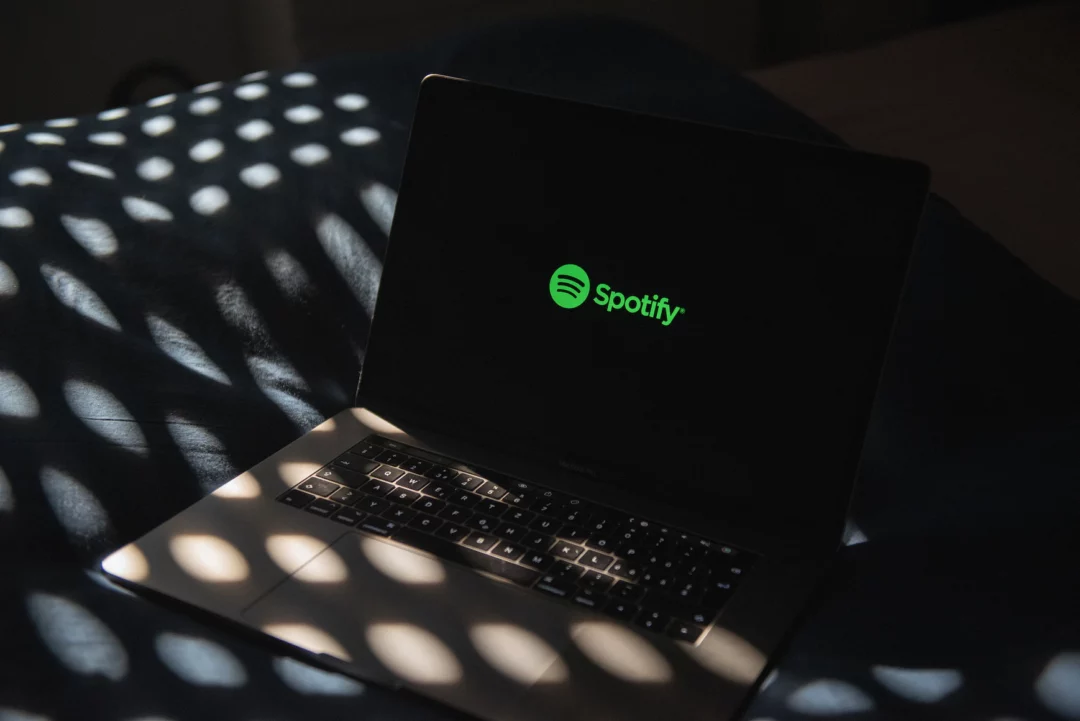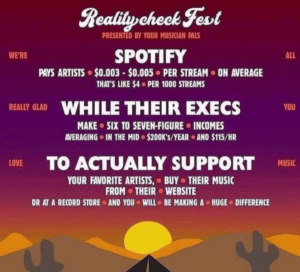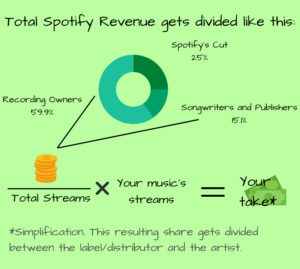Just when you thought that Spotify couldn’t sink any lower, the evil incarnate streaming platform has recently implemented new rules that are set to significantly alter the distribution of royalties within the music streaming industry. These changes, aimed at supporting ‘working artists’, involve the elimination of payments for tracks that receive fewer than 1,000 plays annually. This move is part of a broader effort to crack down on what are termed as “junk tracks”. The overarching goal of these policies is to redirect royalties away from less popular streams and towards artists and labels that are deemed more ‘legitimate’. Artists who struggle to surpass the 1,000 stream mark will take the labelling of their music as “junk tracks” as the ultimate blow and will undoubtedly want to take their so-called “junk tracks” elsewhere.
This strategic shift is expected to channel an additional $1 billion to working artists over the next five years, which seems like a noble endeavour, but the development raises several questions about the fairness and impact of such policies on the music streaming landscape.
Which is the Fairest Streaming Platform in 2024?
In light of Spotify’s recent policy changes, a discussion on the fairness of streaming platforms in 2024 is necessitated. Spotify’s initiative to shift more revenue to ‘working artists’ is a significant move, but it also brings into question the criteria used to define a ‘legitimate’ artist or label.
How do these changes affect smaller, independent artists who might not hit the 1,000 plays mark but still contribute valuable content? Additionally, how do other streaming platforms compare in terms of supporting artists fairly? Are there platforms that offer better opportunities for emerging artists, or are the bigger players like Spotify setting a new standard for the industry?
Before we give our view on which is the fairest streaming platform in 2024, here are some key factors to consider when assessing the fairness of music streaming platforms:
Royalty Payments: Platforms that offer higher royalty rates to artists are generally seen as more fair. Look for platforms that have transparent payment models and are known to pay artists a fair share of the revenue generated from their music.
Support for Independent Artists: Some platforms offer better support and visibility for independent artists. This can include promotional opportunities, playlist inclusion, and tools for engaging with fans.
User Base and Reach: A platform with a large user base can provide more exposure for artists, but this should be balanced with how royalties are distributed among artists.
Artist Control and Rights: Platforms that allow artists more control over their music, including rights management and the ability to set their own pricing, can be more appealing.
User Experience and Discovery Features: Platforms that have robust music discovery features can help lesser-known artists gain exposure. This includes algorithm-driven recommendations, curated playlists, and social sharing capabilities.
Additional Revenue Opportunities: Look for platforms that offer artists additional ways to earn revenue, such as through merchandise sales, concert tickets, or exclusive content.
Community and Engagement Tools: Platforms that provide tools for artists to engage with their fans, like direct messaging, live streaming, or community features, can help build a loyal fanbase.
The 6 Best Spotify Alternatives for Independent Artists in 2024
- Nina: This open-source platform stands out for giving artists total freedom and ownership of their work. Artists receive 100% of royalties with no ongoing fees after a one-time transaction fee. It supports MP3 and WAV formats and offers a discovery feed and editorial features.
- Bandcamp: Known for supporting underground music discovery, Bandcamp allows artists to receive 100% of revenue on Bandcamp Fridays. It offers a DIY user experience and focuses on new music discovery through its editorial section.
- Apple Music: With a royalty rate of $0.01 per stream, Apple Music offers better payouts compared to Spotify. It features lossless and spatial audio supported by Dolby Atmos and has over 100 million songs.
- stream: Co-founded by Laura Jaramillo and TOKiMONSTA, this platform uses Web3 technology for fair artist compensation. It emphasises decentralised permission for AI-generated music and offers biweekly streaming royalties payouts.
- Tidal: With a royalty rate between $0.0125 to $0.015 per stream, Tidal is artist-centric and offers high-quality audio and exclusive music content.
- SoundCloud: This platform is ideal for up-and-coming artists and features a fan-powered royalty system. It allows artists to upload and promote their music directly to a global audience.
Alternative Revenue Streams for Independent Musicians
No streaming platform should be the cornerstone of your revenues. In an ideal world, Spotify and other platforms in the same vein would allow more artists to earn a living wage, but it is unlikely that will ever be the case. Rather than lamenting over the exploitative nature of such services, which artists can do until the cows come home and get absolutely nowhere, it is crucial to explore alternative revenue streams.
- Patreon allows musicians to receive funding directly from their fans, or patrons, on a subscription basis. Artists can offer exclusive content, early access to new songs, and other unique perks to their subscribers. Alternatively, you can ask fans to Buy You a Coffee.
- Bandcamp: Known for its artist-friendly model, Bandcamp allows musicians to sell their music and merchandise directly to fans. The platform is particularly popular for its Bandcamp Fridays, where it waives its share of sales to benefit the artists.
- Radio Play: Getting your music played on the radio can still be a viable source of income. Each play generates royalties, which are collected and distributed by rights organisations.
- Sync Deals: These are agreements where your music is used in film, television, advertisements, or video games. Sync deals can be a significant source of income and also offer exposure to new audiences.
- Physical Sales: Selling physical copies of your music, such as vinyl, CDs, or cassettes, can be profitable. Physical sales often attract collectors and fans who want a tangible connection to the music.
- Merchandising: Selling branded merchandise like t-shirts, hats, or posters can be a substantial income source. Merchandise sales are often most successful in conjunction with live performances or as part of an album release.
- Live Performances: Performing live is not only a way to earn income through ticket sales but also an opportunity to sell merchandise and physically connect with your fanbase.
- Crowdfunding: Platforms like Kickstarter or Indiegogo allow artists to fund projects through direct support from fans. This can be a way to finance new albums, tours, or special projects.
- Licensing and Royalties: Registering your music with rights organisations ensures you receive royalties whenever your music is played in public venues or broadcast. This can provide a steady income stream over time.
By exploring these alternatives, independent musicians can diversify their income sources and reduce reliance on streaming platforms, which often offer lower payouts. Each option presents unique opportunities to monetise different aspects of a musician’s work and fanbase engagement.
Article by Amelia Vandergast




